
Jack Crawford was a sailor of the Royal Navy known as the "Hero of Camperdown."

The Church of Saint Bridget is in Bagot Street, Wavertree, Liverpool, Merseyside, England. It is recorded in the National Heritage List for England as a designated Grade II* listed building, and is an active Anglican parish church in the diocese of Liverpool, the archdeaconry of Liverpool and the deanery of Toxteth and Wavertree.

Holy Trinity Church is in Church Road, Wavertree, Liverpool, Merseyside, England. It is an active Anglican parish church in the diocese of Liverpool, the archdeaconry of Liverpool, and the deanery of Toxteth and Wavertree. The church is recorded in the National Heritage List for England as a designated Grade II* listed building. It was described by John Betjeman as "Liverpool's best Georgian church".

The Church of the Holy Trinity, Berwick-on-Tweed is a Church of England parish church in the centre of Berwick-upon-Tweed, Northumberland. It is a rare example of a church built in the Commonwealth era.

St Andrew's, Roker (1905–7), is a Church of England parish church in Sunderland, England. It is recognised as one of the finest churches of the first half of the twentieth century and the masterpiece of Edward Schroeder Prior. The design of St Andrew's drew together many of the strings of Prior's philosophy and approach to design and building. Three years before commencing St Andrew's, Prior had written that the architect's first purpose was to provide;

Mowbray Park is a municipal park in the centre of Sunderland, Tyne and Wear, England, located a few hundred yards from the busy thoroughfares of Holmeside and Fawcett Street and bordered by Sunderland Museum and Winter Gardens to the north, Burdon Road to the west, Toward Road to the east and Park Road to the south. The park was voted best in Britain in 2008.

Fenwick Justin John Lawson, ARCA is an English sculptor based in the north-east of England.
John and Benjamin Green were a father and son who worked in partnership as architects in North East England during the early nineteenth century. John, the father was a civil engineer as well as an architect. Although they did carry out some commissions separately, they were given joint credit for many of their projects, and it is difficult to attribute much of their work to a single individual. In general, John Green worked on civil engineering projects, such as road and rail bridges, whereas Benjamin worked on projects that were more purely architectural. Their work was predominantly church and railway architecture, with a sprinkling of public buildings that includes their masterpiece, Newcastle's Theatre Royal.

St Modwen's is a Church of England parish church situated in Burton upon Trent in Staffordshire, England. It is part of the Diocese of Lichfield. The church is dedicated to St Modwen, or Modwenna, a nun who founded an abbey at Burton in the 7th century.
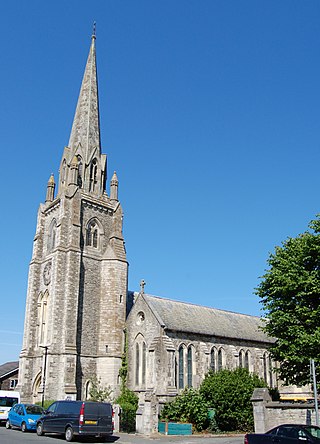
Holy Trinity Church is a former Church of England parish church located in the town of Ryde on the Isle of Wight. Opened in 1845, consecrated the following year and parished in 1863, it became the rapidly growing town's first parish church. A "fine, gracious" and "imposing" structure with a 134-foot (41 m) spire, it is visible for miles as a landmark at the northern end of the island, along with nearby All Saints' Church. The building has been used as a community centre since it closed for worship in 2014. Historic England has listed it at Grade II for its architectural and historical importance.

Holy Trinity Church is a redundant Anglican church in the village of Coverham, North Yorkshire, England. It is recorded in the National Heritage List for England as a designated Grade II* listed building, and is under the care of the Churches Conservation Trust. The church stands near the ruins of the Premonstratensian Coverham Abbey, and not far from the River Cover.

Holy Trinity Church is a redundant Anglican church on Low Lane in the village of Wensley, North Yorkshire, England. The building is recorded in the National Heritage List for England as a designated Grade I listed building, and is under the care of the Churches Conservation Trust. Alec Clifton-Taylor included the church in his list of 'best' English parish churches.
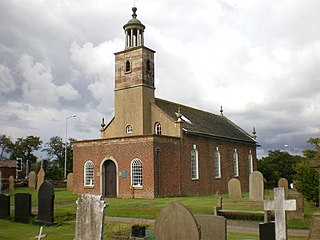
St Mary's Church is a redundant Anglican church on the A59 road as it passes to the south of the village of Tarleton, Lancashire, England. It is recorded in the National Heritage List for England as a designated Grade II* listed building, and is under the care of the Churches Conservation Trust. It is described by the Churches Conservation Trust as a "picturesque early Georgian chapel" with "a lovely unspoiled interior".

St Peter's Church is in Bank Street, Darwen, Lancashire, England. It is an active Anglican parish church in the deanery of Blackburn with Darwen, the archdeaconry of Blackburn, and the diocese of Blackburn. The church is recorded in the National Heritage List for England as a designated Grade II* listed building. It was a Commissioners' church, having received a grant towards its construction from the Church Building Commission.
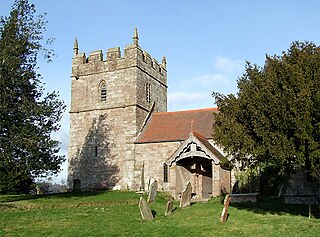
Holy Trinity Church is in the village of Holdgate, Shropshire, England. It is an active Anglican parish church in the deanery of Ludlow, the archdeaconry of Ludlow, and the diocese of Hereford. Its benefice is united with those of St Peter, Diddlebury, Broadstone Church, St Michael, Munslow, and St Catherine, Tugford. The church is recorded in the National Heritage List for England as a designated Grade I listed building. It stands in the former southwest bailey of Holdgate Castle.

Holy Trinity Church, Trinity Rise, in the Tulse Hill area of the London Borough of Lambeth, is a Grade II Listed Building
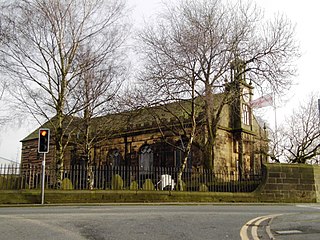
St Aidan's Church is in Main Street, Billinge, St Helens, Merseyside, England. It is an active Anglican parish church in the diocese of Liverpool. It was built in 1716–18 to replace a chapel of ease on the site, and was remodelled and extended in 1907–08. The church is recorded in the National Heritage List for England as a designated Grade II* listed building.
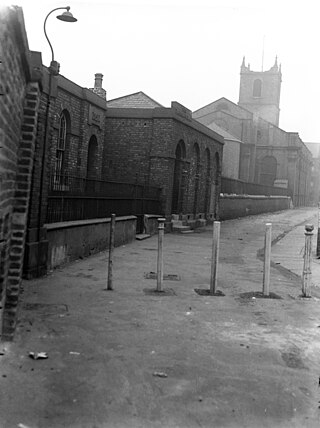
Donnison School is an English former school in the East End neighbourhood of Sunderland. It opened in 1798 to provide a free education to girls, funded by a bequest from Elizabeth Donnison. In the early 21st century it became a media and heritage centre.

Holy Trinity Church, Theale is a Church of England parish church in the Diocese of Oxford. It was completed in 1832 in the Early English style, influenced by Salisbury Cathedral. The church is a Grade I listed building.























